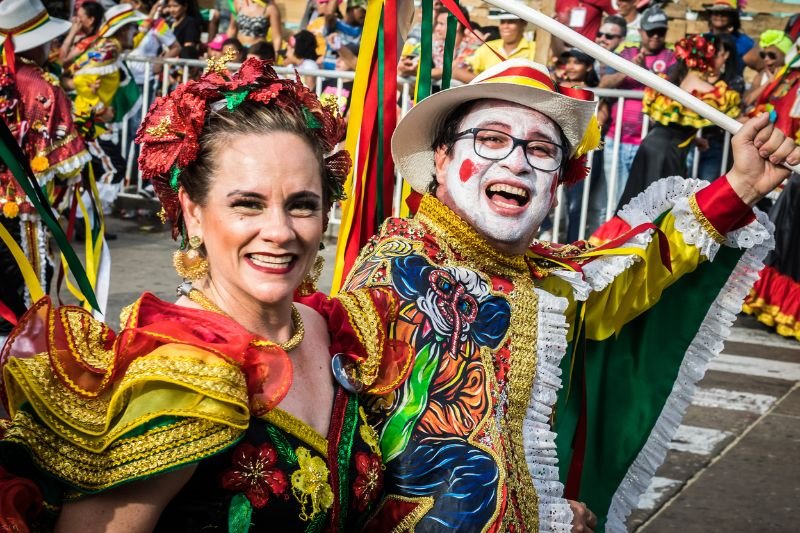The carnival in Venezuela is a vibrant celebration that intertwines traditions from Africa, Europe, and indigenous cultures. From the colorful costumes to the rhythmic music, each element showcases the diverse influences that have shaped this festive event. The fusion of these traditions creates a unique and lively atmosphere that draws people from all over the world to join in the revelry. Join us as we explore how the carnival in Venezuela is a mix of traditions from what countries, and discover the rich tapestry of cultural heritage that defines this iconic celebration.
The Carnival in Venezuela: A Mix of Traditions from Around the World
Welcome to the vibrant world of Venezuelan carnival celebrations! In Venezuela, the carnival is a colorful and lively event that brings together a mix of traditions from various countries. From music and dance to costumes and parades, the carnival in Venezuela is a feast for the senses. Let’s explore how this festive occasion is influenced by diverse cultures from around the world.
The Origins of the Venezuelan Carnival
The roots of the Venezuelan carnival can be traced back to the country’s colonial past. When Spanish settlers arrived in Venezuela, they brought with them their own traditions of celebrating carnival. Over the years, these European customs blended with the indigenous practices of the native populations, creating a unique carnival experience that is distinctly Venezuelan.
European Influence
The Spanish influence on the Venezuelan carnival can be seen in the elaborate masks and costumes worn during the festivities. These intricate designs often feature bright colors and intricate patterns, reflecting the rich cultural heritage of Spain. Spanish music and dance styles, such as flamenco and salsa, also play a significant role in the carnival celebrations.
African Heritage
Another important influence on the Venezuelan carnival comes from the African slaves who were brought to the country during the colonial era. African rhythms and dance movements have become an integral part of the carnival festivities, adding a lively and energetic flair to the celebrations. The influence of African culture can be seen in the drumming circles, known as “tambores,” that are a central feature of many carnival events.
Caribbean Connection
Due to its geographical proximity, Venezuela also shares cultural ties with the Caribbean islands. The carnival in Venezuela incorporates elements of Caribbean music, such as calypso and reggae, adding a tropical twist to the festivities. The lively and infectious rhythms of Caribbean music are a key part of the carnival experience, encouraging people to dance and celebrate with joy.
Key Features of the Venezuelan Carnival
The Venezuelan carnival is a multi-faceted celebration that encompasses a wide range of traditions and customs from different countries. From street parades to masquerade balls, here are some of the key features that make the carnival in Venezuela a truly unique and diverse event:
Parades and Processions
One of the most iconic aspects of the Venezuelan carnival is the colorful parades and processions that take place in cities and towns across the country. Floats adorned with elaborate decorations and costumed dancers fill the streets, accompanied by lively music and cheering crowds. These parades are a visual spectacle that showcases the creativity and craftsmanship of the participants.
Masked Balls and Costume Contests
Masked balls and costume contests are popular features of the Venezuelan carnival, where people can showcase their creativity and imagination through elaborate outfits and masks. Participants often wear traditional costumes inspired by European, African, and Caribbean cultures, creating a diverse and vibrant display of cultural heritage.
Music and Dance Performances
Music and dance are at the heart of the Venezuelan carnival, with performances ranging from traditional folk dances to modern pop music. Different regions of Venezuela have their own unique styles of music and dance, reflecting the diverse cultural influences that shape the country’s carnival celebrations. Whether it’s a salsa performance or a drumming circle, the carnival is a showcase of Venezuela’s rich musical heritage.
Cultural Significance of the Venezuelan Carnival
Beyond the festivities and revelry, the Venezuelan carnival holds deep cultural significance for the people of the country. It is a time to celebrate unity, diversity, and the shared heritage of different communities. The carnival serves as a reminder of Venezuela’s multicultural past and present, highlighting the importance of cultural exchange and collaboration.
Social Cohesion and Community Bonding
The carnival brings people together from all walks of life, fostering social cohesion and community bonding. It provides an opportunity for individuals to connect with their neighbors, celebrate their cultural identities, and participate in shared traditions. The sense of belonging and togetherness that the carnival promotes is essential for building strong and resilient communities.
Promotion of Cultural Heritage
By showcasing a diverse range of cultural traditions, the Venezuelan carnival helps to promote and preserve the country’s rich cultural heritage. Through music, dance, art, and costume design, participants pay homage to the ancestral customs and beliefs that have shaped Venezuelan society. The carnival serves as a living museum of cultural expression, inviting both locals and visitors to immerse themselves in Venezuela’s vibrant heritage.
In conclusion, the carnival in Venezuela is a melting pot of traditions from around the world, reflecting the country’s diverse cultural landscape. From European masquerade balls to African drumming circles and Caribbean music, the Venezuelan carnival is a vibrant tapestry of global influences. By embracing and celebrating this rich cultural tapestry, Venezuela honors its past, present, and future, ensuring that the carnival remains a cherished and vibrant tradition for generations to come.
What Is The Culture Of Venezuela? – South America Travel Pros
Frequently Asked Questions
What cultural influences can be found in the carnival in Venezuela?
The carnival in Venezuela is a vibrant celebration that showcases a mix of traditions from various countries. Some of the prominent cultural influences come from African, European, and Indigenous Venezuelan heritage.
How does African culture contribute to the carnival in Venezuela?
African culture has a significant impact on the carnival in Venezuela, particularly through the rhythmic music, colorful costumes, and energetic dance performances. The African influence is evident in the drumming beats and traditional dance moves that are an integral part of the festivities.
What role does European heritage play in the Venezuelan carnival?
The European heritage, influenced mainly by Spanish colonization, is reflected in the elaborate masks, theatrical performances, and intricate floats seen during the carnival in Venezuela. The fusion of European and Venezuelan traditions adds a unique flavor to the celebrations.
How do Indigenous Venezuelan traditions contribute to the carnival?
Indigenous Venezuelan traditions are woven into the carnival through the use of traditional instruments, folklore themes, and spiritual rituals. These elements enrich the cultural tapestry of the festivities, honoring the country’s rich Indigenous heritage.
Final Thoughts
The carnival in Venezuela is a vibrant celebration that blends traditions from African, European, and Indigenous cultures. This unique fusion of customs brings to life a colorful and joyous event that showcases the rich diversity of the country. From the lively music and dancing to the elaborate costumes and delicious food, the carnival in Venezuela is a mix of traditions from various countries, creating a one-of-a-kind experience for both locals and visitors alike.




